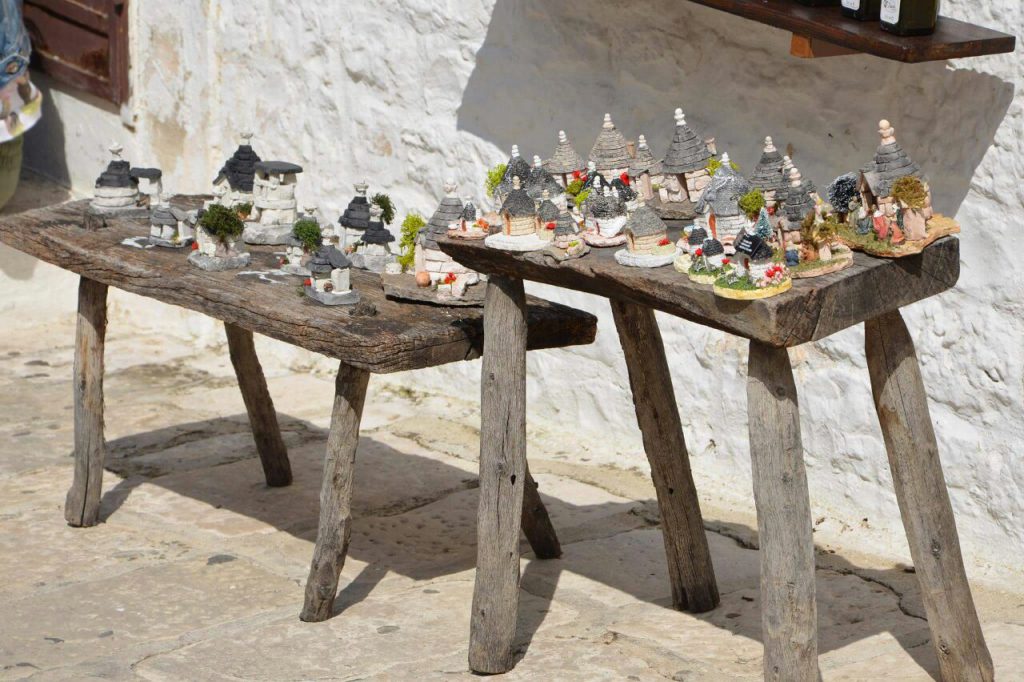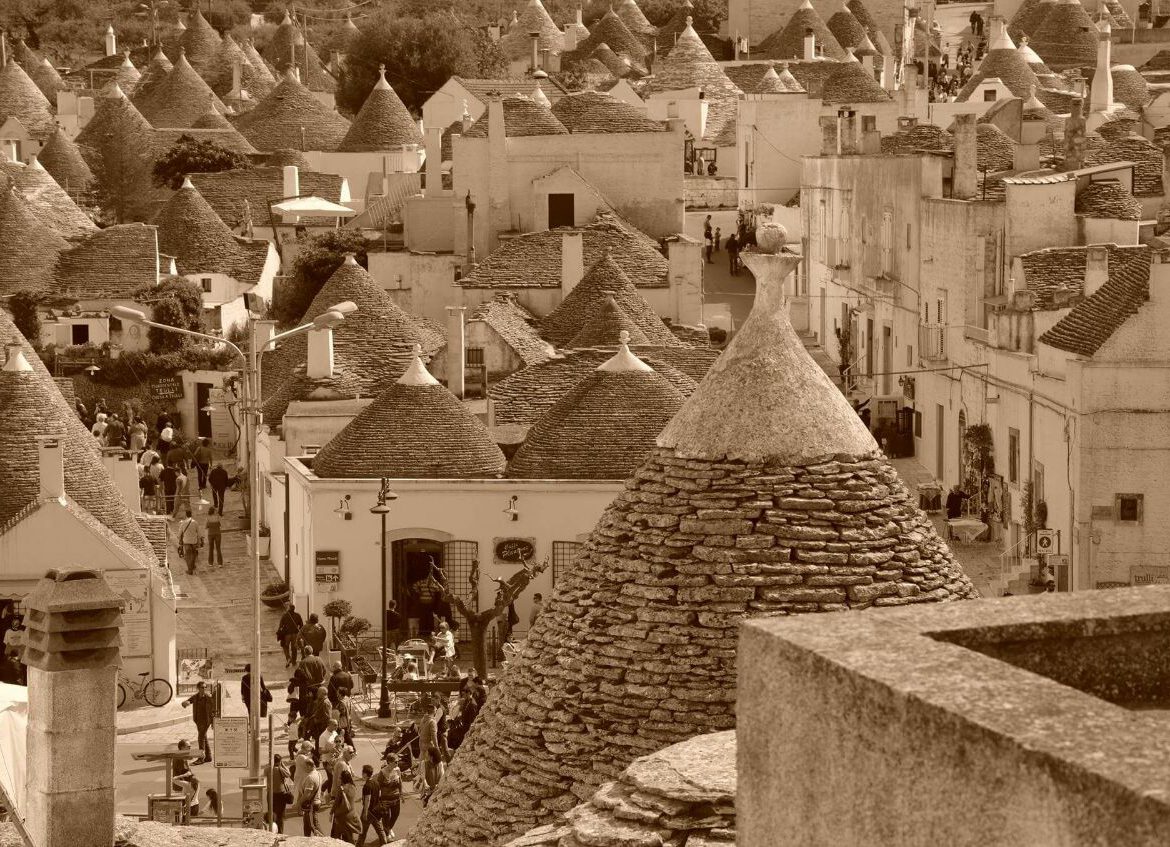The Heart of Alberobello
Alberobello is a World Heritage Site, and it’s immediately apparent to me that the air here holds traces of something I’d buried long ago. After days of the grindstone that is office life, making me lose all sense of what’s real and what isn’t, now I need to get back in touch with what my life’s become.
My husband’s trying to get me to hurry up; although I like travelling with him, sometimes he gets into such a rush to visit and photograph places. He doesn’t realise that slowness can help to breathe in even the air of the sunset, whose light plays delightfully upon the chiancarelle (the grey stone from which trulli roofs are made).
Now he’s working out which route to take – whether it would be better to visit the monumental Trulli District first or else Casa Pezzolla.
I look him straight in the eyes, and ask him to go ahead on his own.
“Delia, we need to be getting a move on – soon it’ll be time for dinner”, he answers.
I whisper a quiet please to him, which at first he doesn’t understand; then he smiles and tells me I can catch him up: he’s going to start from the Chiesa di Sant’Antonio (or Church of St. Anthony).
That’s why I love him; because even when he doesn’t understand my decisions, he trusts me enough to go off on my own.
He races ahead, whereas I like to take my time, to be lulled by the fairytale atmosphere of the white trulli walls. I’ve travelled back in time to a place that elsewhere has long since disappeared.
I marvel at the grey conical roofs, each topped by a sandstone pinnacle, and bow my head to the whitewashed symbols that hark back to ancestral anecdotes. I’d read that these stone houses were built with no mortar, to make them easy to demolish. I stroke the walls with my hand just to make sure.
It’s true, the main streets have little shops chock full of souvenirs, but Alberobello is also much more than this, I realise straight away.

I’m charmed by its unpretentious warmth. I raise my head and gaze up at the white conical keystone, as if it were somehow channelling my thoughts.
Everything is heightened: I love those bunches of chilli peppers hanging by the entrances, the way those eaves overhang to collect rainwater, those hidden stepped alleyways enveloped in centuries of fragrance. They all seem so far removed from the life I’d been living up until just a few days ago.
I sit down on a bench – a woman comes up and asks me how I like their village. I tell her it’s wonderful and she invites me straight in to look round her house.
“That’s just the way we are – if we don’t make people feel welcome, what’s the point in getting tourists to come here?!”
She talks so sweetly, that the shyness pounding in my chest simply melts away.
Inside, the smell of cooking blends in with age-old traces of mold, tickling my nostrils. The interior is almost cramped, filled with embroidered tablecloths which I carefully examine.
“Filet lace and macramé, techniques I learnt from my grandmother. The womenfolk here have been doing this since time immemorial”. As she explains, she moves into the next room.
Captivated, I go over to a window and look out at the patch of land outside – beyond the treetops are a handful of cones and pinnacles, bright in the chiaroscuro that hugs the round structures of the trulli. Enchanting!
“Ma’am, may I offer you a little tipple?”
The woman’s voice brings me back to this rustic house that urges me to live my life to the full. My mood has lightened, and I take a sip of her rosolio, a homemade lemon liqueur, from a tiny glass.
When I walk out, I have a whole bottle of it in my hand, which she’d cleverly – but oh so sweetly – sold me. She strikes me as being strongly connected to her origins.
Once I reach the Belvedere to admire the spectacle extending across the Itria Valley, I find my husband lost in thought. I give him a good hug and we stop there in silence, enjoying the scenery.
When I tell him I’d love to stay in a trullo, he agrees because in the meantime he’d met a local farmer who told him all about how trulli were built.
We’d travelled two different routes to reach the same conclusion: one evening is not enough; a night in the trulli will also mean we can visit the village properly tomorrow.
You can feel Alberobello’s heart beating if you stroke it with your hand.
Special thanks to Anthony Green for the translation







